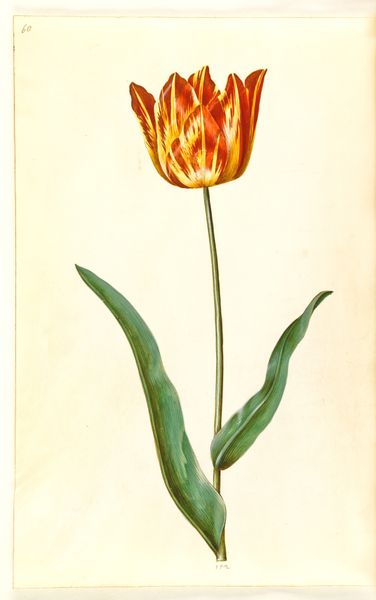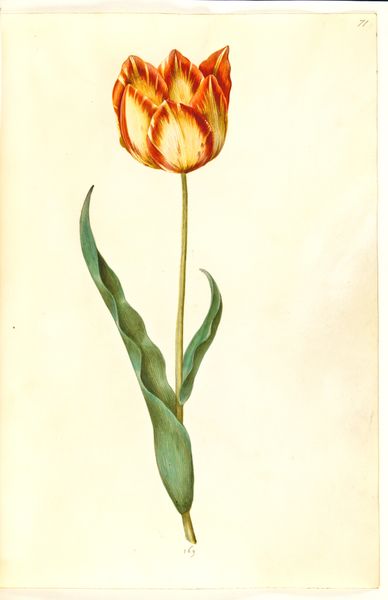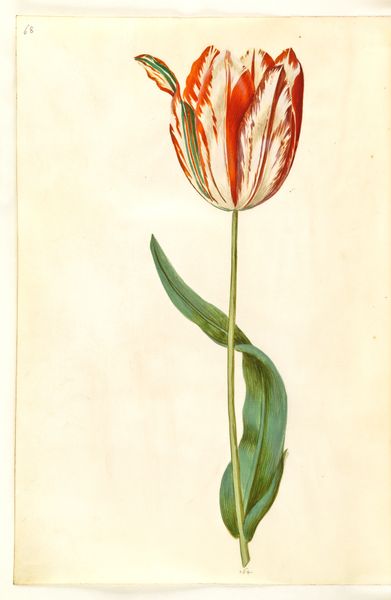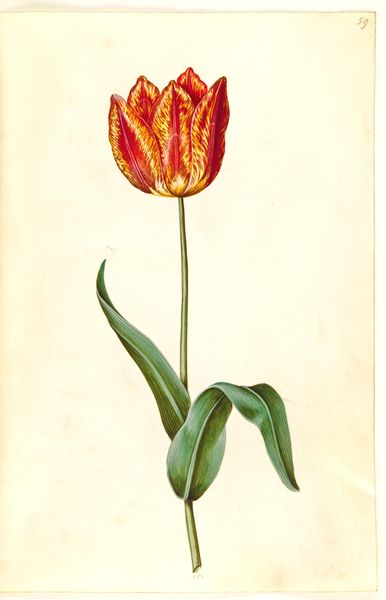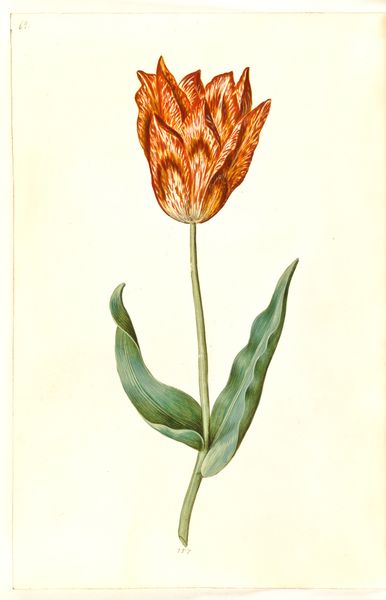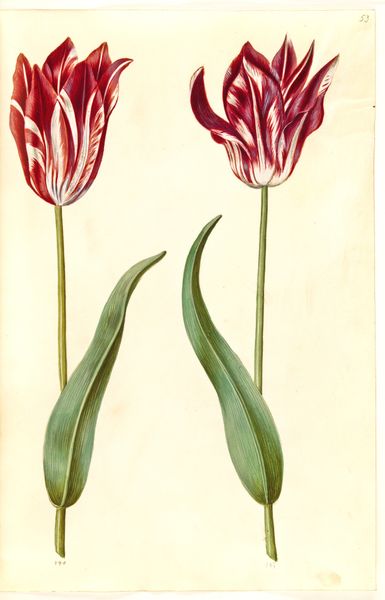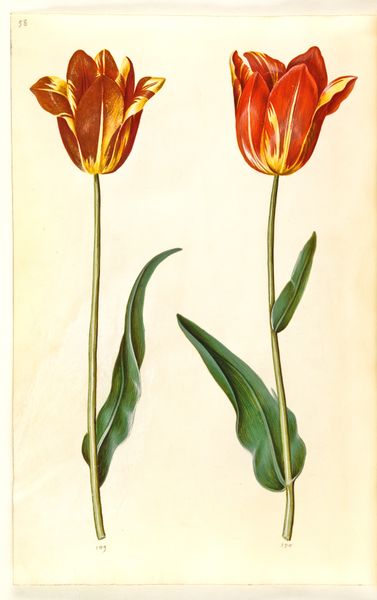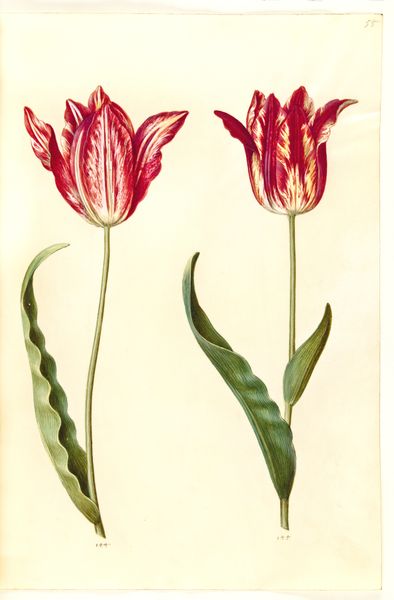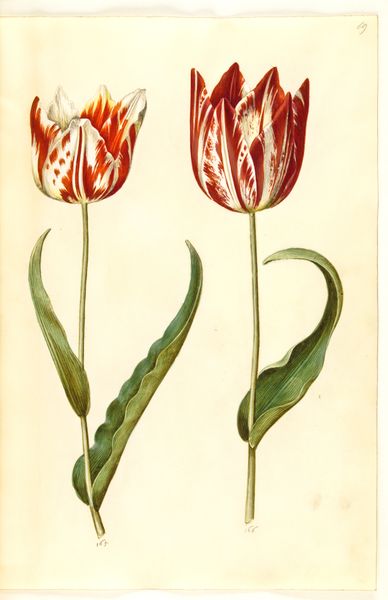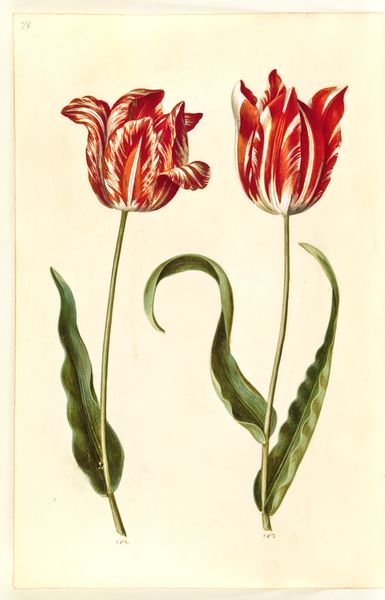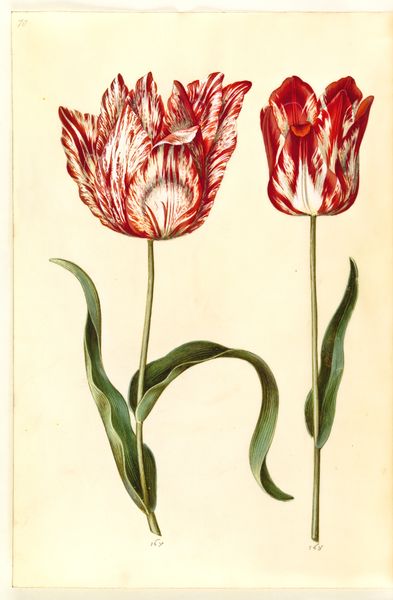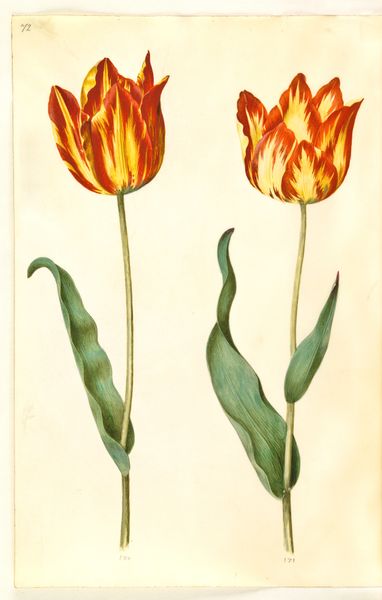
drawing, gouache
#
drawing
#
gouache
#
food illustration
#
northern-renaissance
#
botanical art
#
realism
Dimensions: 375 mm (height) x 265 mm (width) x 85 mm (depth) (monteringsmaal), 358 mm (height) x 250 mm (width) (bladmaal)
Hans Simon Holtzbecker made this watercolor and gouache on vellum rendering of a single “Tulipa gesneriana,” or tulip, during the Dutch Golden Age when the flower became a speculative commodity. The tulip, imported from the Ottoman Empire, quickly became a visual symbol of wealth. The rarest, most coveted tulips, like this red and white striped one, bore a ‘broken’ pattern caused by a virus, ironically making them weaker and harder to cultivate. It’s a fascinating moment when disease and fragility are deemed valuable and beautiful. Holtzbecker, working in this historical moment, was tasked to document the single flower’s likeness with scientific precision and artistic sensibility. What do you make of the fragile beauty of the flower? In what ways does its delicate and ephemeral state reflect society's fixation on beauty and status?
Comments
No comments
Be the first to comment and join the conversation on the ultimate creative platform.

